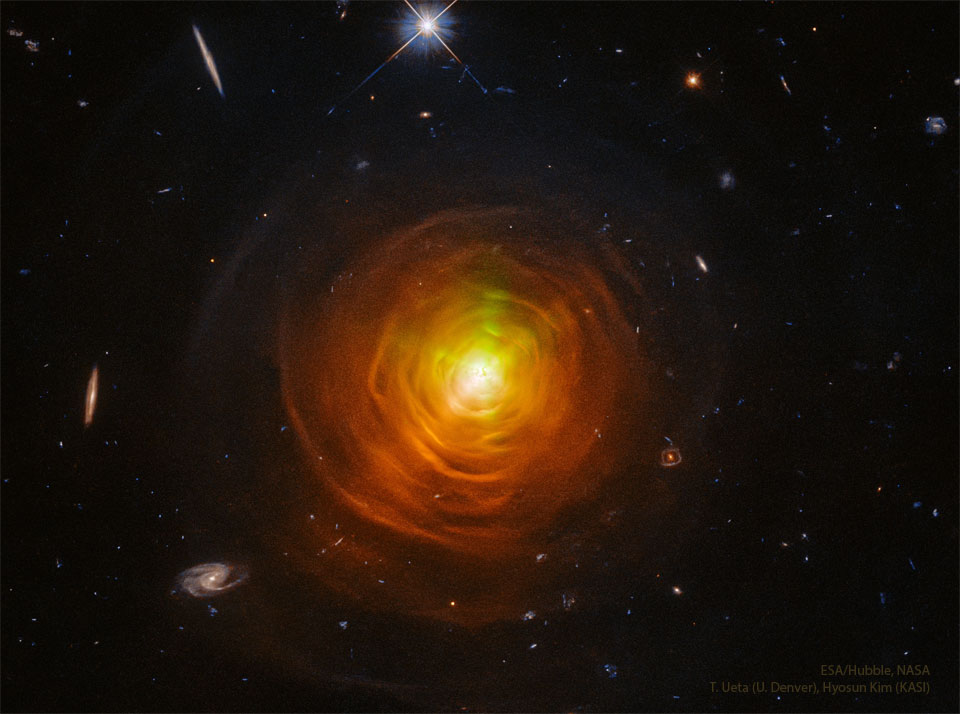2023年7月17日
Shells and Arcs around Star CW Leonis
Image Credit: ESA, NASA, Hubble, T. Ueta (U. Denver), H. Kim (KASI)
Explanation: What’s happening around this star? No one is sure. CW Leonis is the closest carbon star, a star that appears orange because of atmospheric carbon dispersed from interior nuclear fusion. But CW Leonis also appears engulfed in a gaseous carbon-rich nebula. What causes the nebula’s complexity is unknown, but its geometry of shells and arcs are surely intriguing. The featured image by the Hubble Space Telescope details this complexity. The low surface gravity of carbon stars enhances their ability to expel carbon and carbon compounds into space. Some of this carbon ends up forming dark dust that is commonly seen in the nebulas of young star-forming regions and the disks of galaxies. Humans and all Earth-based life are carbon-based, and at least some of our carbon was likely once circulating in the atmospheres of near-death stars like carbon stars.
Tomorrow’s picture: telescopes and sky
狮子CW恒星周围的壳层与光弧
影像提供: ESA, NASA, Hubble, T. Ueta (U. Denver), H. Kim (KASI)
说明: 这颗恒星周围发生了什么事?没有能说个准。狮子CW星是最邻近我们的碳星,由于大气中散布着来自内部核融合所产生的碳,让这颗恒星看起来色泽泛橙。此外,狮子CW星似乎也包裹在富碳的星云里。造就这团星云复杂性的原因目前不明,但其壳层和弧状几何形状的确是蛮有趣的。这幅由哈勃太空望远镜所拍摄的主题影像,就很细致的呈现了这种复杂性。由于碳星的低表面重力,强化了它们把碳和碳化合物排放到太空的能力。其中部分的碳最终形成黝黑的尘埃,成为在恒星形成区的星云及星系盘里很常见物质。人类和所有的地球生命都是碳基生命体,而部分我们身体里的碳,很可能就曾在像碳星这样的濒死恒星之大气里流动。
明日的图片: telescopes and sky







